How we took an outback roadtrip through Australia during COVID
Follow Tess and Grady’s intrepid adventure to the heart of Australia amid border closures at the height of the COVID-19 pandemic
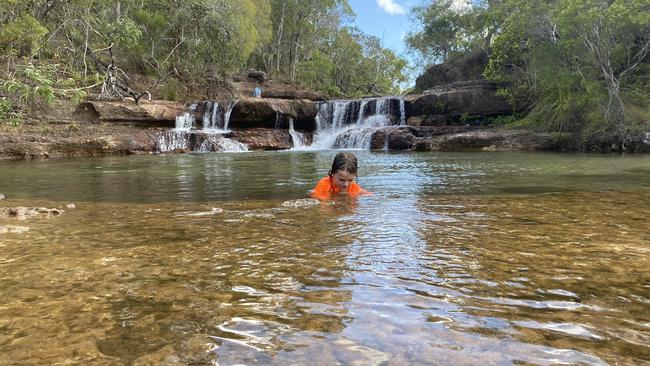
We cross the NSW-Qld border at Warri Gate, north of Tibooburra. It’s a desolate spot, sun-blasted and flat. The border is just a gate in a seemingly endless line of fence. We stop and look around, expecting someone to leap out and demand our permits. I was anticipating something more. Barbed wire? Armed guards? But there’s nothing and nobody. We open the gate, drive through and close it behind us. …
------------------------------
Queensland wasn’t even on the itinerary. This much longed-for and planned trip was supposed to start in April. My eight-year-old son and I would take our ancient but trusty Toyota up the Oodnadatta Track through South Australia into Central Australia, then the Tanami north and the Gibb River Road west to Broome, lasting about five to six months, almost all of it in a tent.
I dreamt of showing my son Uluru and Kata Juta and the stunning Kimberley country I love so much. And I wanted him to see his mum in action – crossing rivers, wrangling tents in high winds, changing tyres, starting campfires with just a few damp twigs. I remember how thrilled I was seeing my own parents in their outback element when we camped as kids – I loved their fearlessness and resourcefulness and deep affection for the country. Would Grady see something similar in me? I hoped so. But when best laid plans meet a global pandemic …
For weeks we played at camping in the backyard, our tent set up among the pot plants. Our original departure date came and went. We imagined ourselves travelling across the country, conjuring wildlife and waterfalls and dunes and billabongs. I told Grady about the immense creations of the Rainbow Serpent and together we tried to fathom sixty thousand years of storytelling. But all those zeroes rendered us silent.
For a while it felt like the backyard would be as far as we got. But in June the numbers dropped, the borders opened — or, at least, the ones we needed; Queensland and the Northern Territory by way of South Australia and we could go. Departure date was fixed in our minds and hearts for July 15.
Of course, Western Australia was still firmly shut but I figured we’d deal with that when we came to it in several months’ time.
Our first camp was by a river in the Blue Mountains; we took our while getting there but, in truth, we were a mere 126km from home in Sydney. It was stunningly cold, but we were exhilarated by being on the road, our tent up in real bush.
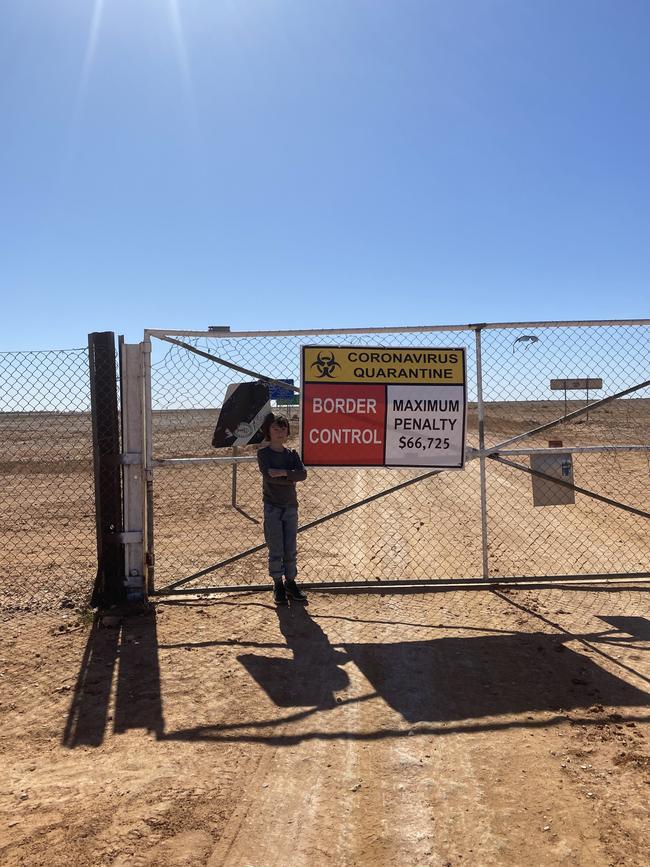

I rang my folks to let them know we were well and truly on our way, only to be told that the Northern Territory had again closed to Sydney — a decision based on rising community coronavirus transmission in a place we’d left behind, Sydney, and one we weren’t going near, Victoria.
We were gutted. And I was totally thrown. Where would we go? Should we pack up and go home? My carefully choreographed itinerary was disintegrating.
The next day our swags crackled with frost as we woke by the clear, freezing creek. I got out my maps and took a call from my sister-in-law. “Tess, go north to Queensland! Get warm!” It was so not the trip I had planned but, over the next few days as I scraped ice off the windscreen at each stop from Wellington to Narromine and Dubbo, it grew on me.
By Cobar, I had decided. To Queensland — still open at this point — we would go, via far western NSW. Pivot, I told myself. It’s what everyone’s doing.
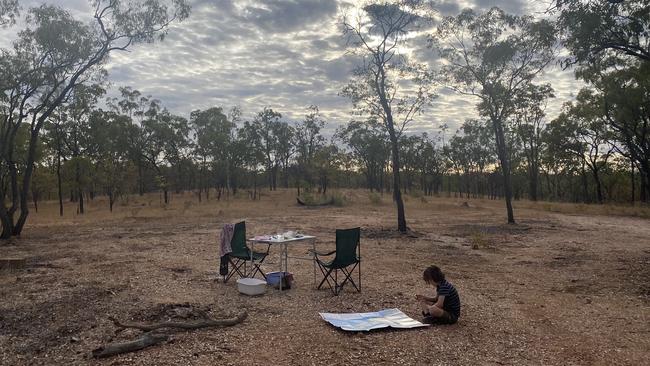
Our route across NSW is marked by our names in dozens of COVID-19 ledgers: date, time, name, address, phone number, email. Even the smallest business in the tiniest town had the familiar little plastic table set up outside with bottles of sanitiser and box of used and new pens for signing in.
At White Cliffs, a lone COVID-19 tester sat in the driving cold wind outside a community hall waiting for takers. At Dubbo’s wonderful Flying Doctors Museum, attendants diligently wiped down displays and touch screens. At the bakery in Bourke, the proprietress anxiously cleared the shop as it became increasingly packed. At Wanaaring, the servo attendant filled the tank for me while I stood by awkwardly. Cards only. No cash please.
On July 28 at Tibooburra, just shy of the Queensland border, we got our permits to cross the state.
The expiry date was August 5. Perfect timing. I wanted to see more of the beautiful Sturt National Park but there were rumours a closure was coming – a conversation overheard at the Wilcannia servo, a cautionary word from the bartender at the Cameron Corner roadhouse. Suddenly time was against us. And so we found ourselves at Warri Crossing, closing the lonely gate behind us. For a few days we bush-camped, imagining poor Burke and Wills wretched and ruined by the Dig Tree.
We were stopped, literally and figuratively, in our tracks by herds of camels. I knew they were out here but the sight was so extraordinary we stared in disbelief as they ambled across the vast plains in front of us. Hundreds of budgies swooped over our campsites and masses of tiny blooms made blue and yellow pools in the scrub.
We pulled into the lovely town of Windorah on August 5 having passed only a couple of other cars in the preceding days. At the pub, a young English backpacker, stranded by the pandemic, was wading through the latest set of rules on social distancing. No standing at the bar to have a drink (but try telling the locals).
The owner was understandably anxious to see our permits.


Greater Sydney was officially a hotspot and our timing was tricky from their point of view. The local senior constable was called and arrived on a ride-on mower in his stubbies. He was no less intimidating for it though, and looked thoroughly at our permits and my file of receipts and dated photos of Grady at assorted landmarks including the border before giving us an official go-ahead. Courteous and serious, he explained how vulnerable this community was, how careful they had to be. We’d be checked again by police in Junda. Again, thorough, courteous and with enough time and good humour to share a joke with Grady and let him give them a hard time about their flailing Broncos. Football has been one of the great connecting elements on this trip thanks to my son.
When we tell people we are from Sydney they gasp in mock terror and back away. But only once would we be on the receiving end of flat-out suspicion. Unpleasant as it was, I knew it came from anxiety again for the safety of vulnerable communities.

Over the next two months we slept under pale, slender ghost gums, in the midst of dense, damp rainforest, surrounded by dozens of termite mounds. We camped by rivers full and deep, by beaches with water so turquoise we couldn’t stop gazing at it, and in dry creek beds, their sandy bottoms crisscrossed by hundreds of animal tracks.
We swatted away flies, slapped at mosquitoes and cursed midges. We perfected our shout-whispers – essential for notifying each other of a crimson finch just landed, a passing wallaby, an immense goanna; at one heart-stopping moment, a huge, black, tusked wild boar and, at another, a cassowary followed by two chicks. We have seen the big-ticket, jaw-drop vistas, gorges and falls and we’ve been immersed in the endless more subtle beauty of scrub, heath and gibber. We swam with turtles on the Great Barrier Reef, fished the mangrove-thick tributaries of the Endeavour River, canoed the gorge at Boodjamulla. We have been struck silent by ancient rock paintings at Split Rock, scanned the skies for shooting stars, watched the bush at night for Min Min lights.
And my son has indeed seen me cross rivers, wrangle the tent in rain and wind and start a fire from damp twigs – with varying success!

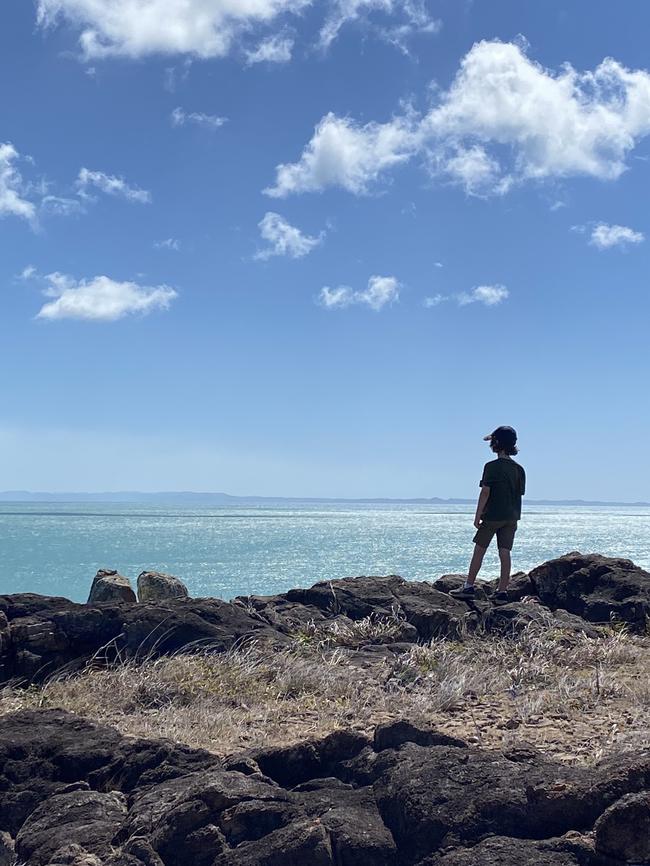
From fellow travellers, from locals and from business owners and tour operators all doing it tough through these strange times, we have encountered generosity, curiosity, goodwill and outrageously good humour again and again.
In Karumba we met a family who had left their jobs and sold their house and car to do a 12-month round-the-world trip after seven years of planning and saving. They made it to Southeast Asia when the pandemic struck. So instead, they returned to Australia, bought a 4WD and started driving. “Aren’t we so lucky?” I said, as we gazed upon another Gulf sunset. “We are,” she replied.
One afternoon in the far north Queensland town of Coen we stopped in the pouring rain to get fuel and take cover until the downpour passed. Our stove had stopped working a few days back and while we rarely used it, preferring a fire, it was handy on windy nights or in national parks where fires were banned. “Was there anyone in town who might be able to take a look?” I asked the woman at the fuel stop. “Sure, love. Just pop down to the pub and look for the tall bloke with the big eyebrows. He’ll sort you out.”
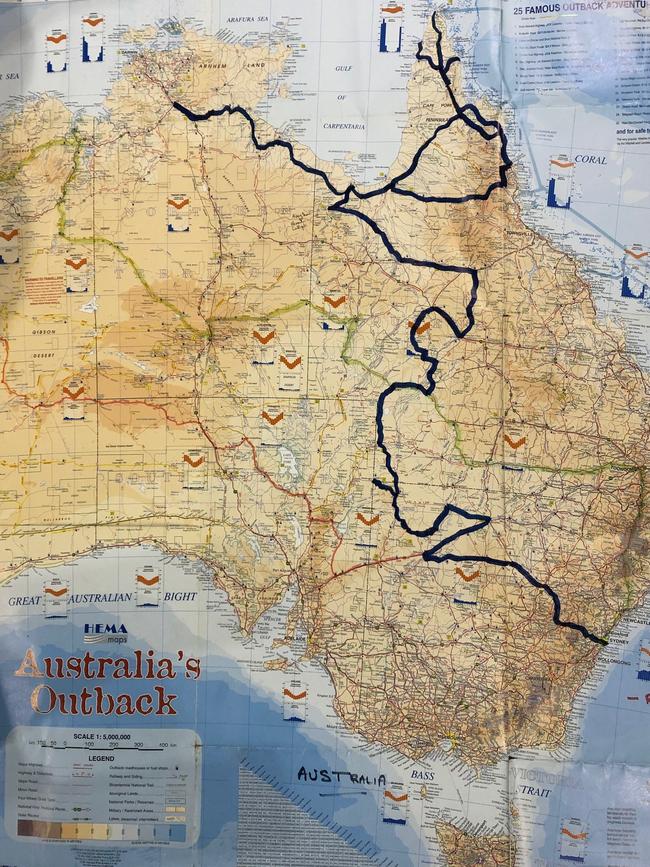

We dashed down the street in the rain to the Exchange Hotel where dozens of COVID-19 notices fluttered like bunting from the fence. Sure enough, there he was, and he fixed our stove on the spot, beer in hand, no payment necessary. “That’s the Cape for you, darlin’. We help each other out.”
When the rain cleared, we strolled through the town and Grady found a bunch of local kids to play footy with on the field. Barefoot and cackling with cheeky laughter, they raced around on the wet grass as the fat grey clouds slowly released the surrounding ranges to late afternoon sun.
Camped by the Barcoo River, we heard the news. (The rumour mill didn’t always run true but this time if did). If we could prove we’d been out of a hotspot for more than two weeks, we could apply to cross into the Territory.
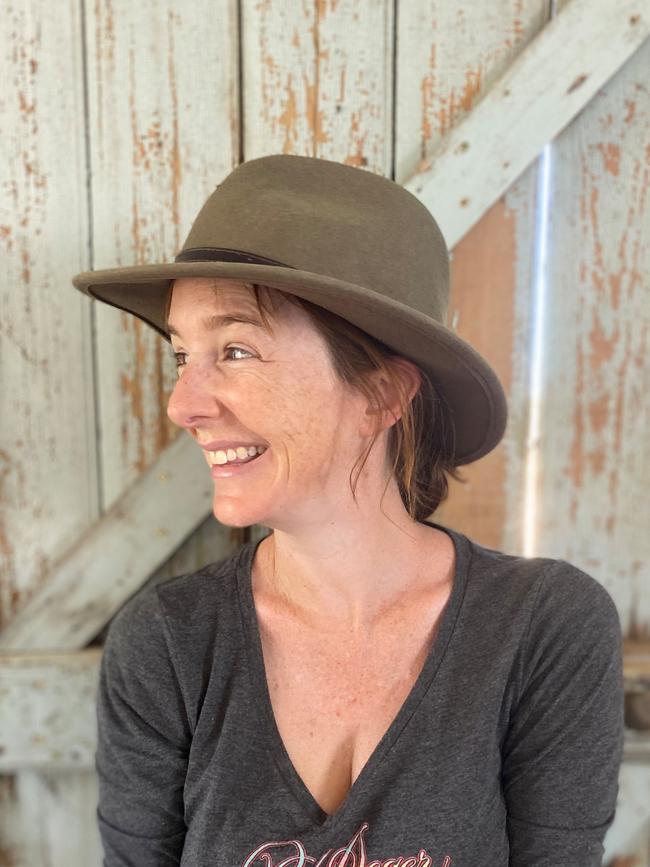
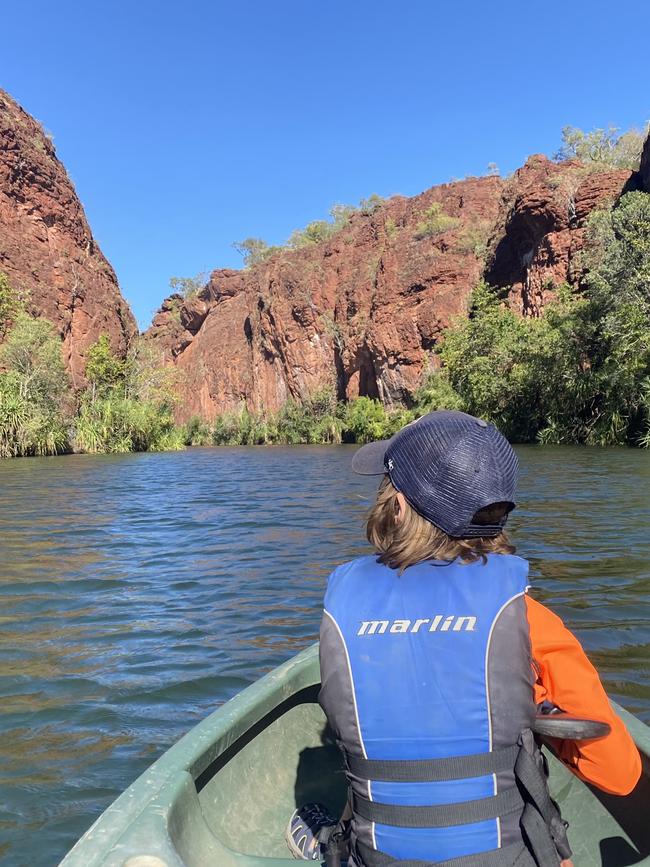
I lived in Darwin for four years, before Grady was born, with plenty of regular outback travel. Three years ago, I managed a short, solo camping trip to Central Australia. And ever since, I had been longing to be back out in the bush. Whether my outback yearnings were born decades ago when I was a child, or in another lifetime by the ancestors my great aunt, Mary Durack, wrote about, and who traversed this country in much tougher circumstances, I don’t know. I just know that with red dirt under my nails I feel stronger, grounded and as if, as a single mum, I can do anything for my kid.
Soon the two of us were heading west again, toward the Northern Territory border, a dividing line that we could not have imagined crossing just a few months ago but, with permits and papers in hand, we could pass through.
And I’ll be able to share that first sight of Uluru with Grady after all.



To join the conversation, please log in. Don't have an account? Register
Join the conversation, you are commenting as Logout